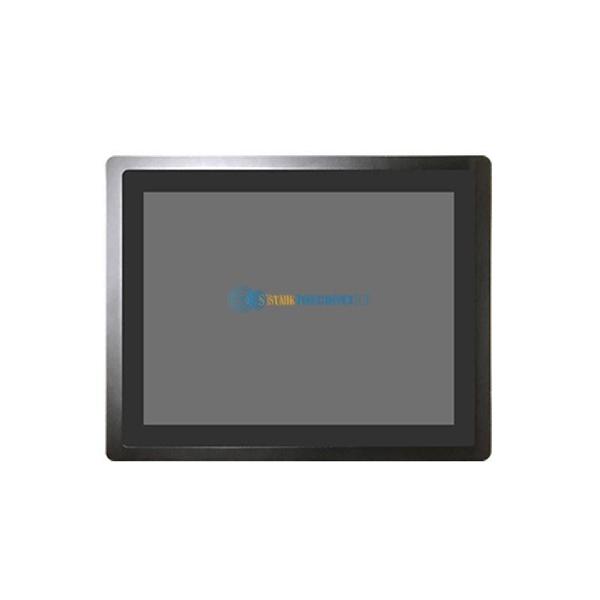Welcome STARK TOUCH DEVICE!
Solutions
Maintenance and inspection of the grounding system for industrial control computers
Industrial Control Computer Grounding System Maintenance and Inspection Guide
Proper grounding is critical for industrial control computers to ensure operational stability, protect against electrical surges, and comply with safety standards. Neglected grounding systems can lead to data corruption, equipment damage, or even personnel hazards. This guide outlines key practices for maintaining and inspecting grounding infrastructure in industrial environments.

Understanding Grounding System Components
Grounding Electrodes and Conductors
Industrial control systems typically rely on grounding electrodes—such as rods, plates, or mesh—buried in soil to dissipate electrical energy. Conductors, often copper or aluminum, connect these electrodes to the computer chassis and peripheral devices. Over time, corrosion or physical damage can degrade these components, reducing conductivity.
For example, in humid factory environments, grounding rods may corrode faster, leading to higher resistance. Regular inspection of electrode connections and conductor integrity is essential to prevent intermittent grounding failures.
Grounding Types in Industrial Settings
Protective Grounding: Redirects fault currents to the earth, preventing electric shock.
Functional Grounding: Stabilizes reference voltages for analog and digital circuits.
Equipment Grounding: Bonds non-current-carrying metal parts to the ground to avoid static buildup.
Misconfigurations, such as mixing protective and functional grounds, can introduce noise into control signals, causing erratic behavior in PLCs or sensors.
Step-by-Step Grounding System Inspection
Visual and Physical Checks
Conductor Integrity: Inspect cables for cuts, abrasions, or loose connections at terminals. Pay attention to joints near vibration-prone areas, such as motor control centers.
Electrode Condition: Examine grounding rods for corrosion, bending, or exposure above ground level. Rods should be buried at least 8 feet deep in most soil types.
Enclosure Bonding: Verify that all metal enclosures, racks, and panels are electrically bonded to the grounding network. Use a multimeter to check for continuity between bonded parts.
Electrical Continuity Testing
Resistance Measurement: Use a low-resistance ohmmeter to test the grounding circuit. Acceptable resistance values vary by industry standards but typically fall below 1 ohm for critical systems.
Loop Impedance Checks: For protective grounding, measure the impedance of the entire loop (including electrodes and conductors) to ensure it meets safety code requirements. High impedance can delay fault current dissipation, increasing shock risks.
Environmental Assessments
Soil Resistivity: Periodically test soil resistivity near grounding electrodes, as changes in moisture content or chemical composition can alter grounding effectiveness.
Proximity to Interference Sources: Ensure grounding conductors are routed away from high-voltage cables or electromagnetic sources to minimize induced noise.
Common Grounding Issues and Solutions
High Ground Resistance
Symptoms: Voltage fluctuations, erratic sensor readings, or frequent circuit breaker trips.
Causes: Corroded electrodes, loose connections, or dry soil conditions.
Fixes:
Replace corroded grounding rods with treated or stainless-steel alternatives.
Improve soil conductivity by adding bentonite clay or chemical grounding compounds around electrodes.
Tighten all conductor terminals and apply anti-corrosion paste.
Ground Loops
Symptoms: Noise in analog signals, unexpected equipment shutdowns, or communication errors between devices.
Causes: Multiple grounding points creating unintended current paths.
Fixes:
Isolate signal grounds from protective grounds using isolation transformers or optocouplers.
Consolidate grounding points to a single reference point (star grounding) to eliminate loops.
Improper Bonding
Symptoms: Static discharge damage to components, intermittent control failures, or arc flash risks.
Causes: Missing or inadequate bonds between enclosures, conduits, or raceways.
Fixes:
Install bonding jumpers across all metallic junctions, including cable trays and pipework.
Use exothermic welding for permanent, low-resistance bonds in critical sections.
Advanced Maintenance Techniques
Thermographic Inspections
Infrared cameras can detect overheating at grounding connections, indicating loose or corroded joints. Schedule thermographic scans quarterly in high-dust or high-vibration environments.
Ground Potential Rise (GPR) Monitoring
In facilities near high-voltage transmission lines, GPR events can induce transient voltages on grounding systems. Install surge protectors and monitor GPR levels during storms or grid switching operations.
Documentation and Traceability
Maintain detailed records of grounding system modifications, including electrode locations, conductor sizes, and test results. Use numbered tags or RFID markers to track components in complex installations.
Case Study: Resolving Grounding-Induced PLC Failures
A food processing plant experienced frequent PLC crashes during wet seasons. Inspections revealed:
Corroded grounding rods with resistance exceeding 5 ohms.
Multiple grounding points for different equipment, creating loops.
Solutions Implemented:
Replaced rods with galvanized steel and improved soil conditioning.
Reconfigured grounding to a single star point, isolating signal and power grounds.
Added surge protection devices at critical junctions.
Outcome: PLC uptime improved by 95%, eliminating production downtime caused by grounding issues.
By adhering to these inspection and maintenance practices, industrial operators can ensure reliable grounding performance, safeguard equipment, and comply with electrical safety regulations.


